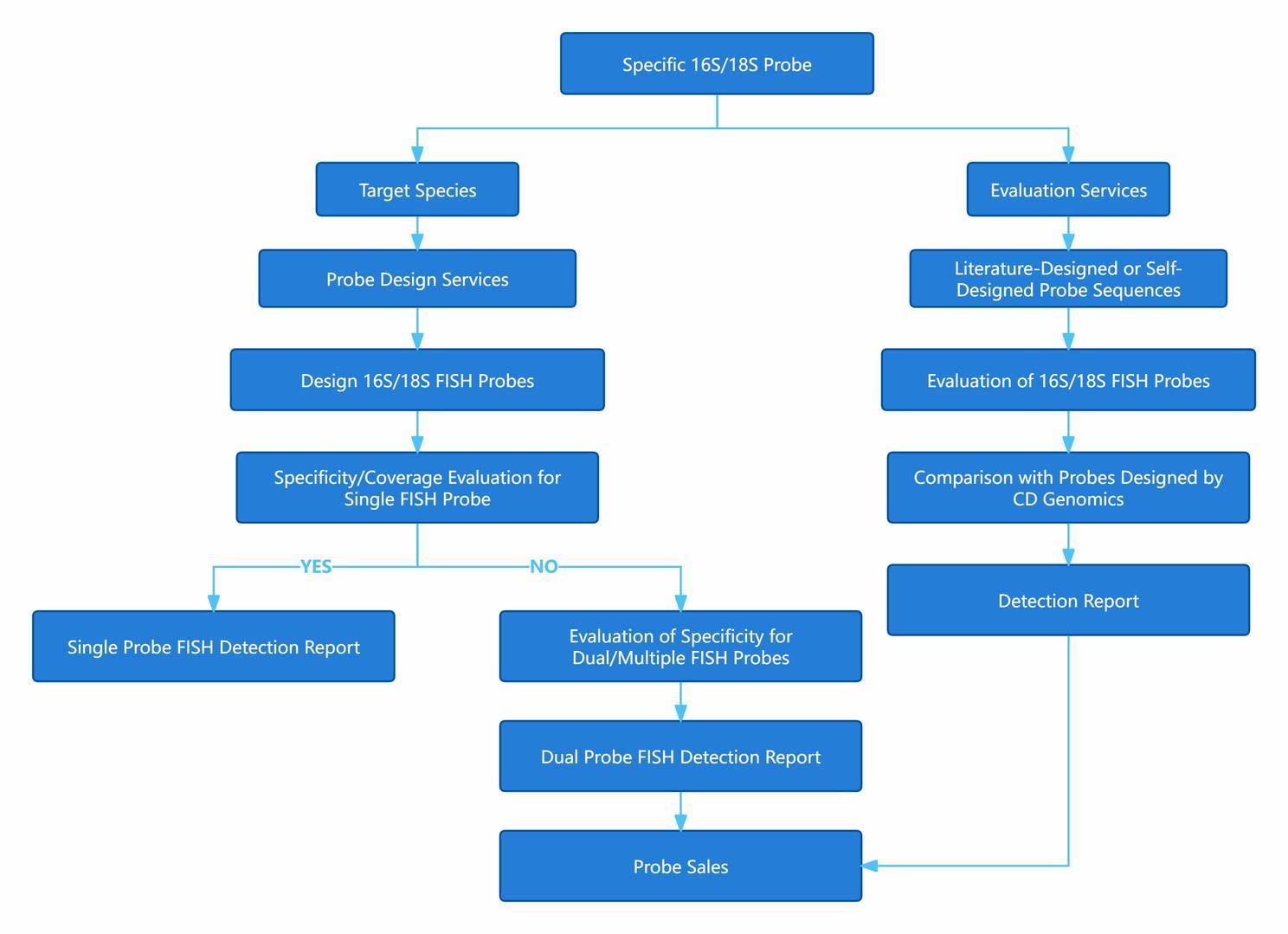1. Probe Design and Synthesis: Based on your research goals, we provide precise probe design and synthesis services.
2. Experimental Condition Optimization: We optimize the experimental conditions according to the sample type and characteristics of the target microorganism to ensure the best experimental outcome.
3. Technical Support: We offer detailed experimental operation guidance and technical support to ensure your experiments proceed smoothly.
Data Analysis and Result Interpretation: After the experiment is completed, we provide a comprehensive results analysis report and assist you in interpreting the experimental data.

Why Choose CD Genomics' 16S FISH Probe Design Service?
With its strong technical background, extensive database resources, and years of experimental experience, CD Genomics is capable of providing high-quality, customized FISH probe design services to clients. Here are several unique advantages of our services:
- High-Quality Probe Design: Leveraging the world's largest 16S database, we evaluate millions of 16S sequences and select the most specific probes to ensure high-precision detection.
- Personalized Customization: Based on your research needs, we can design probes tailored to specific targets, whether for a single microorganism or a complex microbial community. CD Genomics provides the best solutions for your specific research objectives.
- Comprehensive Technical Support: From experimental planning and probe selection to data analysis and result interpretation, we provide full technical support to ensure that your experiments are successful and that the data is accurate and reliable.
- Multiplex Probe Design: For research that requires simultaneous detection of multiple microbial targets, CD Genomics offers multiplex FISH probe design services, supporting the simultaneous hybridization of probes with different fluorescent labels.
Microbial FISH Detection Workflow
Probe Design and Synthesis
We begin by designing and synthesizing highly specific probes tailored to the 16S or 18S rRNA sequences of your target microorganism. The probes are rigorously tested for specificity, ensuring they bind exclusively to the desired microorganism's rRNA.
Sample Fixation
Proper fixation preserves the integrity of the microorganism's cellular structure and nucleic acid, ensuring that the probes can effectively enter the cells. Samples may include bacterial cultures, tissue sections, and environmental samples like soil or water.
Sample Permeabilization
Samples undergo a permeabilization process, which is optimized to enhance probe entry and binding specificity, ensuring the probes reach their intended target within the cells.
Overnight Hybridization
Probes are incubated with the sample overnight under controlled conditions to allow sufficient time for hybridization with the target rRNA sequences.
Washing
Excess probes and non-specifically bound probes are removed through a washing step, reducing background signals and enhancing the clarity of the results.
Fluorescence Microscopy Observation
The sample is then analyzed under a fluorescence microscope, where the detected fluorescence signals indicate the presence and distribution of the target microorganisms. By using different fluorescence markers, we can capture multiple data points, including the abundance and spatial distribution of the target microorganism.

Interpretation of Microbial FISH Detection Results
| Result Type |
Description |
| Positive Result |
Observed the expected fluorescence signal, indicating the presence of the target sequence and successful detection of the target microorganism. |
| Negative Result |
No fluorescence signal observed, indicating that the target sequence is absent or its expression level is below the detection limit. |
| Non-specific Binding |
Background fluorescence observed, suggesting that the probe may have bound to non-target sequences, requiring optimization of experimental conditions. |
Samples Requirement
To ensure that we provide the most accurate FISH probe design and detection services, we require the following information from you:
- Sample Type: This can include cell cultures, tissue sections, microbial community samples, etc.
- Target Microorganism's Genetic Sequence or GeneID: This is the basis for designing specific probes and helps us accurately locate the target sequence.
CD Genomics' Species-Specific 16S FISH Probe Design Service provides precise and reliable molecular tools for your microbial research. By utilizing advanced probe design platforms, extensive database support, and rigorous experimental protocols, we ensure that each client receives highly specific and sensitive experimental results. Whether you are conducting microbial community analysis, pathogen detection, or ecological research, CD Genomics can offer the most suitable solutions for your needs. If you have any questions or require further details about our services, please feel free to contact us. We are dedicated to providing professional technical support and service.




